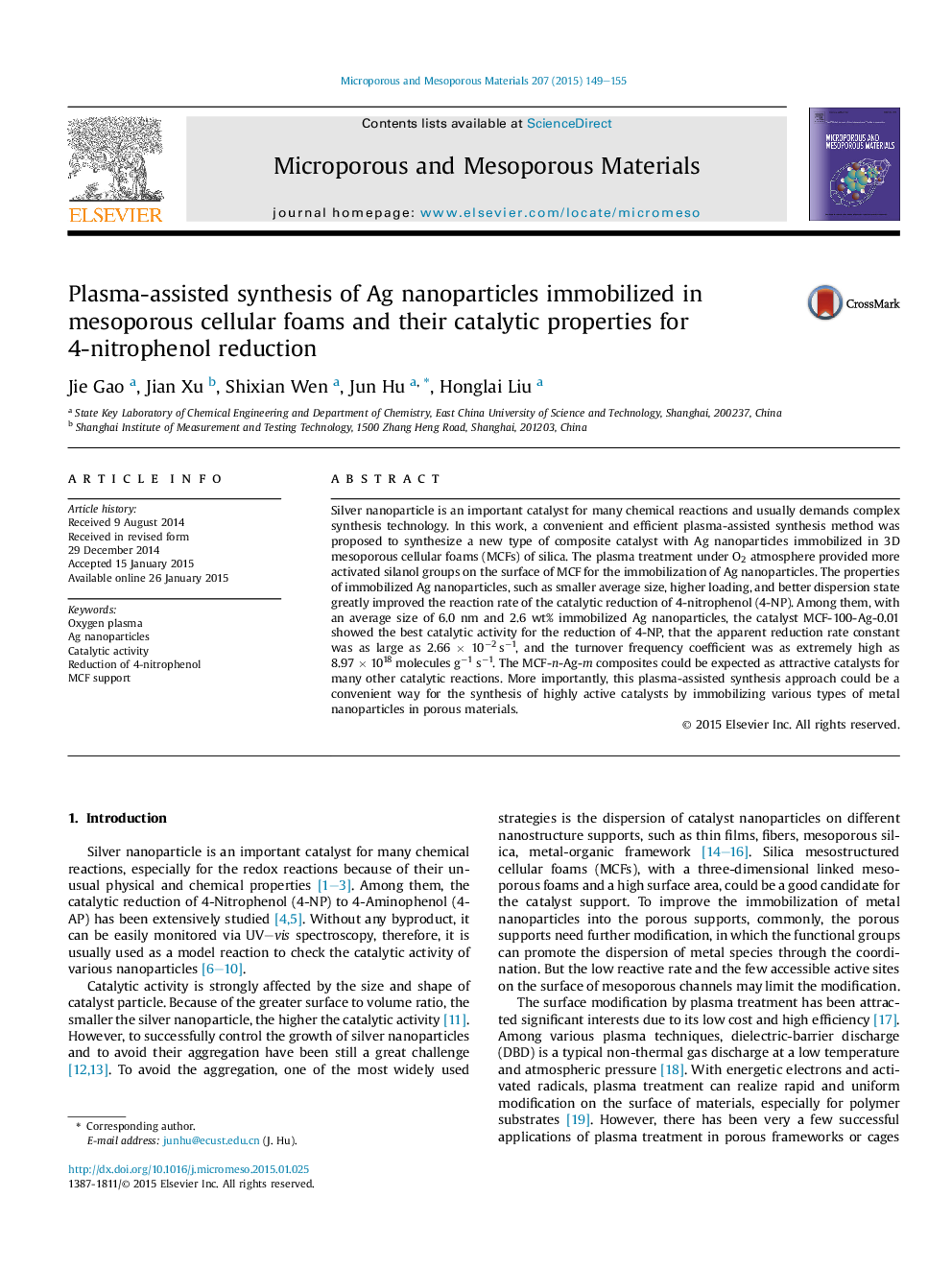| کد مقاله | کد نشریه | سال انتشار | مقاله انگلیسی | نسخه تمام متن |
|---|---|---|---|---|
| 72669 | 49030 | 2015 | 7 صفحه PDF | دانلود رایگان |

• MCF/Ag composites showed a high catalytic activity for 4-nitrophenol reduction.
• A plasma-assisted synthesis method was proposed to fabricate MCF/Ag composites.
• Plasma-treated MCFs provided more silanol groups to coordinate with Ag cations.
• Power strength of plasma treatment affected the morphology of Ag nanoparticles.
Silver nanoparticle is an important catalyst for many chemical reactions and usually demands complex synthesis technology. In this work, a convenient and efficient plasma-assisted synthesis method was proposed to synthesize a new type of composite catalyst with Ag nanoparticles immobilized in 3D mesoporous cellular foams (MCFs) of silica. The plasma treatment under O2 atmosphere provided more activated silanol groups on the surface of MCF for the immobilization of Ag nanoparticles. The properties of immobilized Ag nanoparticles, such as smaller average size, higher loading, and better dispersion state greatly improved the reaction rate of the catalytic reduction of 4-nitrophenol (4-NP). Among them, with an average size of 6.0 nm and 2.6 wt% immobilized Ag nanoparticles, the catalyst MCF-100-Ag-0.01 showed the best catalytic activity for the reduction of 4-NP, that the apparent reduction rate constant was as large as 2.66 × 10−2 s−1, and the turnover frequency coefficient was as extremely high as 8.97 × 1018 molecules g−1 s−1. The MCF-n-Ag-m composites could be expected as attractive catalysts for many other catalytic reactions. More importantly, this plasma-assisted synthesis approach could be a convenient way for the synthesis of highly active catalysts by immobilizing various types of metal nanoparticles in porous materials.
By DBD plasma treatment in O2 atmosphere, 3D mesoporous cellular foams (MCFs) of silica provided more activated silanol groups for the immobilization of Ag nanoparticles. Among various obtained catalysts, with an average size of 6.0 nm and containing 2.6 wt% Ag nanoparticles, MCF-100-Ag-0.01 showed the best catalytic activity for the reduction of 4-nitrophenol, with a large apparent reduction rate constant of 2.66 × 10−2 s−1, and extremely high TOF coefficient of 8.97 × 1018 molecules g−1 s−1.Figure optionsDownload as PowerPoint slide
Journal: Microporous and Mesoporous Materials - Volume 207, 1 May 2015, Pages 149–155